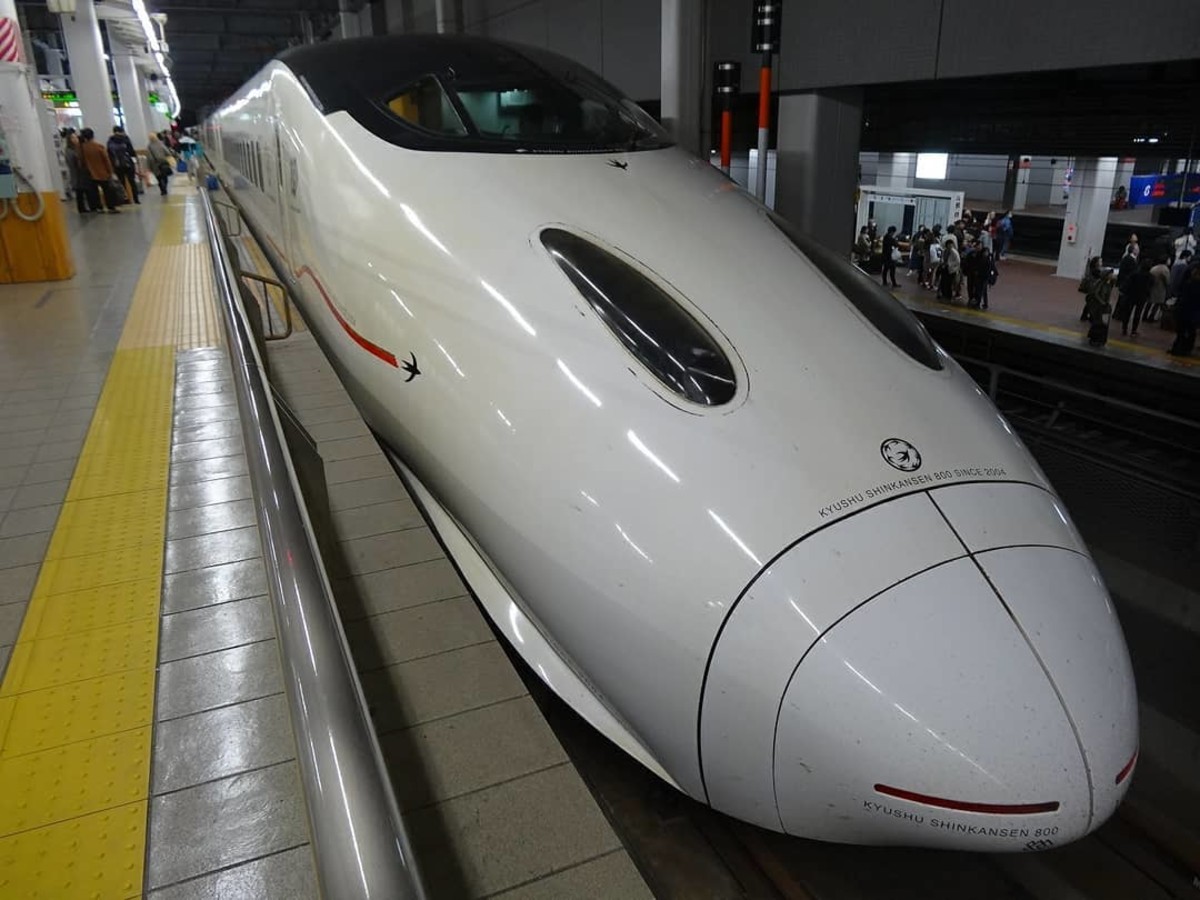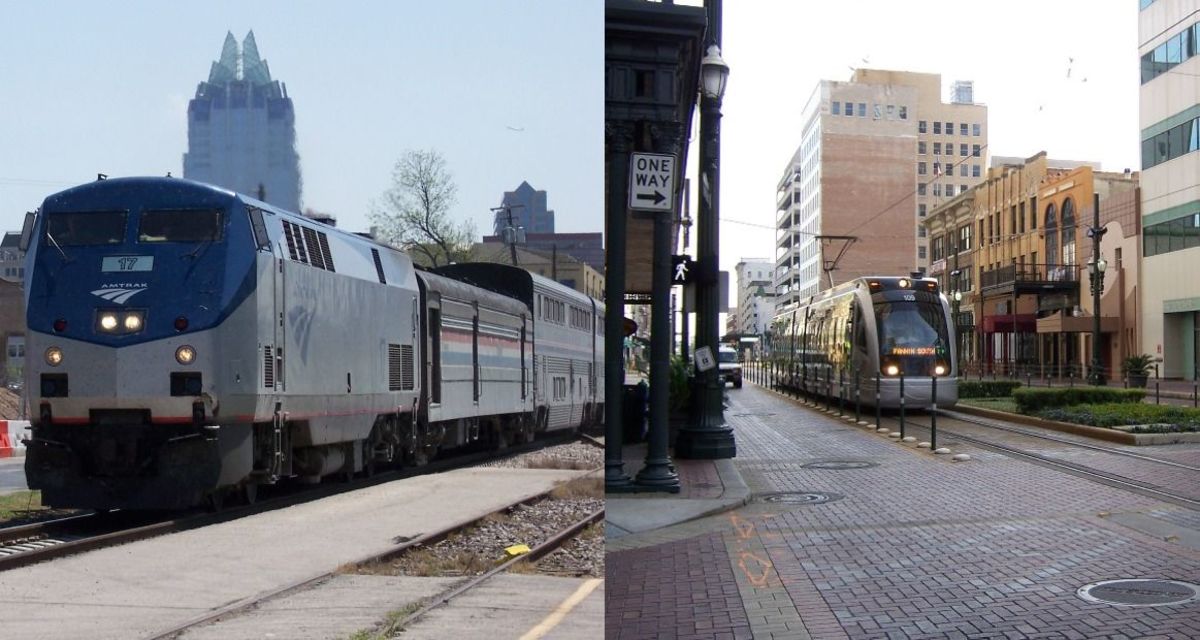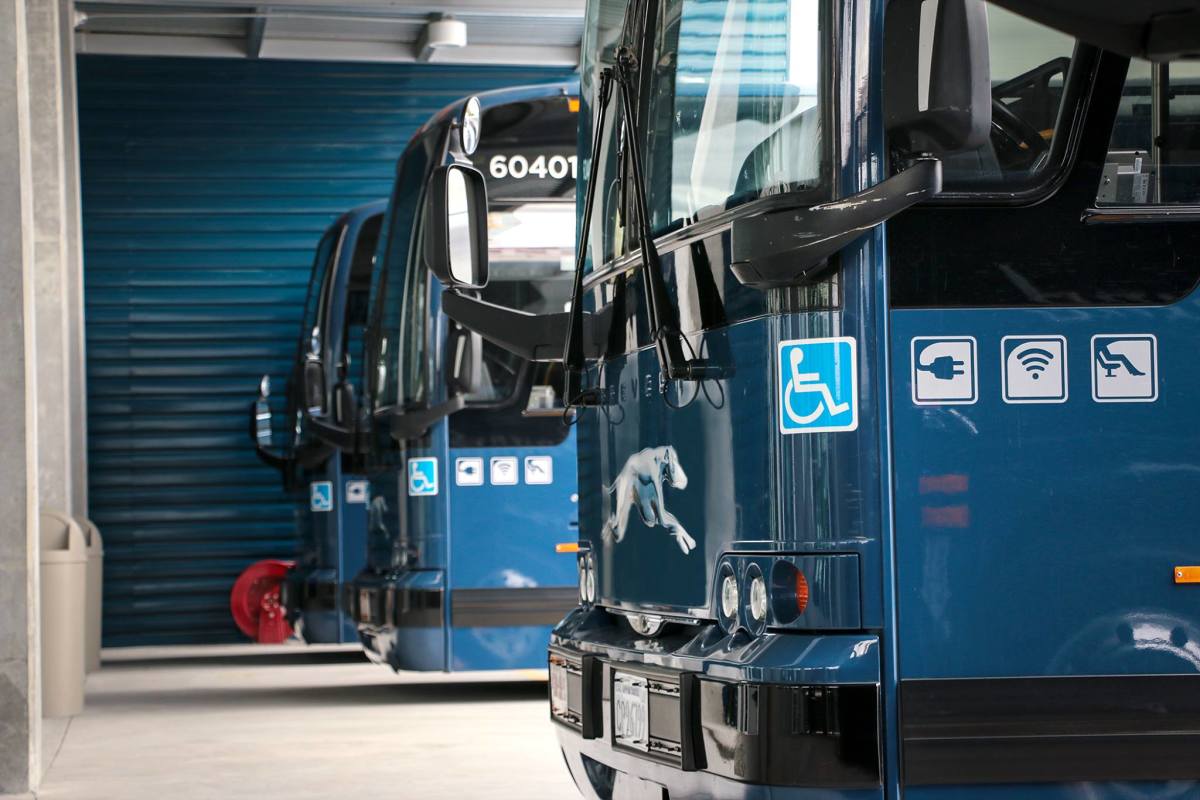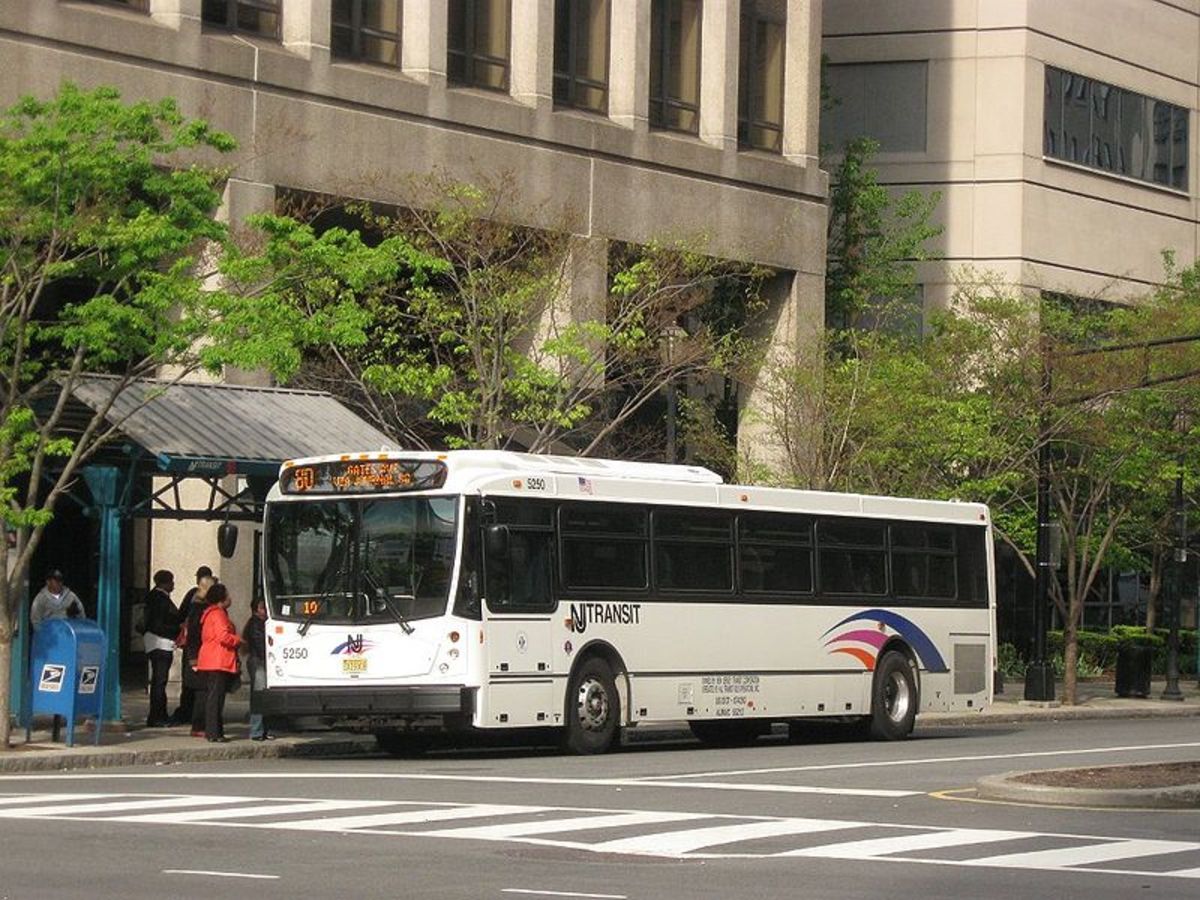Light Rail Transit Leads North American Transit Comeback With Gains in Ridership, Cost-Effectiveness, Urban Development
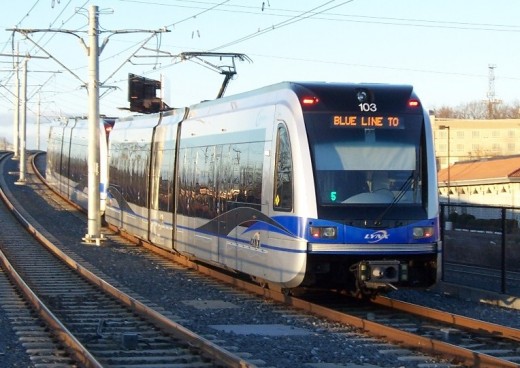
Many proponents of public transportation insist that it's time for American cities to move forward with light rail. They point out that, with its ability to move large volumes of people quickly, comfortably, safely, and reliably as an alternative to the congested roadway lanes in America's cities, electric light rail transit (LRT) is a transportation bargain for the USA.
Time for Action
In a number of U.S. cities, decision-makers have been planning, considering, studying, re-planning, re-considering, and re-studying light rail transit for decades.Now, say transit supporters, it's time to stop the indecision, stop the vacillation, stop the hand-wringing, and move forward with installing this cost-effective, attractive, higher-capacity, and environmentally friendly mode of urban transit.
New roads tend to induce traffic — which eats up about three-quarters of the new capacity. If you build them, the traffic will come ... and congest them! Newly constructed highways may be empty for the first few weeks, but will quickly fill up.
LRT is More Cost-Effective
Rail transit advocates seem to have a point:For about the cost of a new airport, or the cost of a couple of new freeway interchanges, a city could install miles of brand-new LRT transportation capacity, and a provide pleasant, more economical, and more environmentally friendly transportation alternative to the urban area's congested roadways. Plus the demand for expensive central-city parking would be reduced significantly.
How about ongoing costs? LRT systems are usually a bargain to operate — significantly less per passenger-mile than buses, on average. And an electric LRT railcar has a service life from 2 to 3 times longer than that of a motor bus or hybrid bus.
For particular urban travel corridors, rail transit tends to work well because it can typically carry people faster, at lower cost, more safely, more reliably, and more comfortably than comparable bus operation. As a general rule, people that don't ride transit totally fail to understand this.
LRT More Attractive Than Buses
Abundant evidence suggests that LRT tends to attract more of the public to ride it than buses do. Railcars are generally more spacious, passengers have more personal space, the ride is smoother, trips are faster and more reliable, there's a greater sense of safety, and routes are much easier to understand (just follow the tracks).
The task of boarding a wheelchair passenger is much easier on LRT. On a bus, this takes several minutes on and several off, because the driver has to deploy the ramp or lift, then prepare the tiedown space. After that, the passenger has to negotiate the chair past the farebox, through wheelwells, and into the tiedown space. Then the bus driver has to tie the wheelchair down. Several other passengers typically lose their seats. This entire process is reversed when this passenger has to deboard. Anyone who rides buses regularly will relate to this.
On a railcar (whether streetcar or larger light rail car), there's none of this — the wheelchair passenger boards and deboards just as fast and easily as the other passengers. No tiedown necessary.
Particularly because LRT attracts passengers so well, LRT lines are also powerful magnets for economic and real estate development near stations — much more so than buses or so-called "bus rapid transit" operations. This attractiveness tends to cluster new residential and commercial development near stations, an effect called "transit-oriented development" (TOD). This not only guides urban development away from sprawl and into more livable patterns, but also generates more taxbase for the locality that often more than pays for the cost of the LRT system and much of its operation.
A Solution to Congestion
In pursuing light rail and other transit and roadway improvements, it's important to be straight with the public.Traffic congestion is probably here to stay — neither more highways nor freeway lanes, nor more mass transit can provide a "magic bullet".
The question is:is there an alternative to traffic congestion?That's where light rail — offering additional capacity on its own, segregated alignment — can truly make a difference.Light rail offers people a way to bypass and cut through the congestion.
LRT Uses Proven Technology
Periodically, transit techno-fads come and go, promoting this or that variety of "gizmo-gadget" transit. But except for a few rare "niche" applications or experiments, usually all these "amusement park" alternatives do is help postpone real-world travel solutions by floating "pie-in-the-sky-bye-and-bye" dreams and unrealistic claims. Those that ultimately get off the drawing board tend to be far more costly in the long run than LRT, with troublesome technical drawbacks.
In contrast, light rail (which runs on two standard railway rails and is typically powered from an overhead wire) is a tried-and-true, proven, off-the-shelf transit technology.It's not an experiment — literally hundreds of cities, worldwide, are now relying on it.Many advocates say: Let's not "reinvent the wheel" — let's stick with the proven, tested, reliable technology of light rail transit.
Amazing Growth of LRT
Several new modern LRT systems have been created as upgrades from "legacy" streetcar and interurban-type railways in a number of American cities, including San Francisco, Boston, Philadelphia, Pittsburgh, Cleveland, Newark. In addition to these, New Orleans has continued to operate its 1920-era streetcars (the oldest continuously running in the USA), and has expanded and upgraded its system with two new lines (one of them a revival of the major Canal line), with historic-looking replica rolling stock using modern LRT-type technology. Also, San Francisco has continued to operate its familiar, old-fashioned cable car system (not electric, but pulled by underground steel cables).
And there's a growing list of cities that have installed superb brand-new electric light rail systems designed for faster corridor operations — San Diego, Buffalo, Portland, San Jose, Sacramento, Los Angeles, Baltimore, St. Louis, Denver, Dallas, Salt Lake City, Jersey City-Hoboken-Bayonne, Houston, Minneapolis, Charlotte, Phoenix, Seattle, and, most recently, Norfolk.
But that's not all! More and more cities have been re-introducing electric streetcar systems — basically, a kind of "junior" version of LRT. There are two common forms of this mode: heritage (i.e., streetcars using either refurbished historic rolling stock, or replica cars using modern technology) and modern (totally contemporary in appearance and technology).
Cities with "heritage" systems were the first to begin: Partly inspired by the successes of the legacy systems in New Orleans (electric streetcars) and San Francisco (cable cars), within the past three decades, Dallas, Memphis, Kenosha (Wisconsin), San Francisco, Savannah, San Pedro, Tampa, Little Rock, Charlotte, San Diego. and St. Louis have all installed heritage-type streetcar systems powered from overhead wires that continue to provide real, commercial mass transit for the public as well as an attraction for tourists to enjoy.
Other cities are opting for the totally modern version of the streetcar. New modern streetcar systems are now operating in Portland; Tacoma; Seattle; Washington, DC; Tucson, Cincinnati; Kansas City; Dallas; Salt Lake City; Atlanta; Detroit; and Milwaukee. Oklahoma City's new streetcar line is about to open, and other projects are under construction or under design in Phoenix and Minneapolis. And an array of other cities have serious plans on the drawing board.
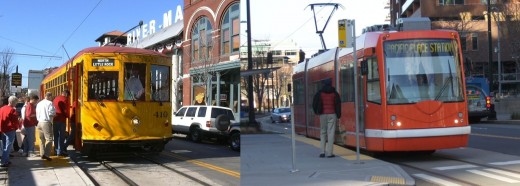
Scale LRT to Your City's Needs
Some form of LRT (interurban-style, or streetcar-style) would probably be beneficial for any city, but it needs to be scaled to your particular city's size and needs.It's especially important to keep the design and cost scaled down to the real needs of any smaller or medium-size city, so that more light rail can be extended to cover more of the growing metro area.
Subways and elevated structures are almost always far more expensive, both to build and to maintain and operate. As a general rule, surface construction is much cheaper and can provide nearly the same level of speed, reliability, and safety — and surface routes are far more interesting and user-friendly for passengers.
Stations, also, don't need to resemble architectural monuments. Simple stations with bus-stop-like waiting shelters can be low-cost, functional, and adequately attractive to the public.
Route It Where People Are
Light rail needs to go where people live, work, and shop.It needs to penetrate neighborhoods.Light rail is quiet, free of obnoxious fumes, and pedestrian-friendly.As much as possible, residents need to be able to walk to the stops.
"Not-In-My-Back Yard" (NIMBY) opposition can tend to be irrational, hysterical, myopic, and destructive.The general public who favor better mass transit must not let the hysteria of a few, and their resistance to any change whatsoever, obstruct good planning and the provision of good transit service and its social benefit for the vast majority — including the NIMBY naysayers themselves.
Don't Let the Route Meander
To work well, light rail has to provide straight, fast, reliable service in the corridors it serves.It can't effectively "go everywhere" — no transit route can.
Trying to "connect all the dots" can be self-defeating.Passengers need to feel they're getting where they're going reasonably directly and quickly; zig-zags and "dog-legs" can chase them away.
People Like Light Rail
In city after city, light rail is proving it's a winner, with growing ridership and broad public support.Wherever it's been implemented, taking the first step has always been the biggest hurdle.But without exception, the doomsayers predicting disaster have been dead wrong.Passengers have flocked to light rail in droves.Light rail has delivered on its promises.It's the biggest success story in urban transportation!
Politicians and planners must stop the delay, the indecision, the procrastination — it's time to move forward on light rail for America's cities!
■
Lyndon Henry posts to Twitter as @LHenry_rch. His blog is:
http://writingperspectives.wordpress.com
■
© 2011 Lyndon Henry



